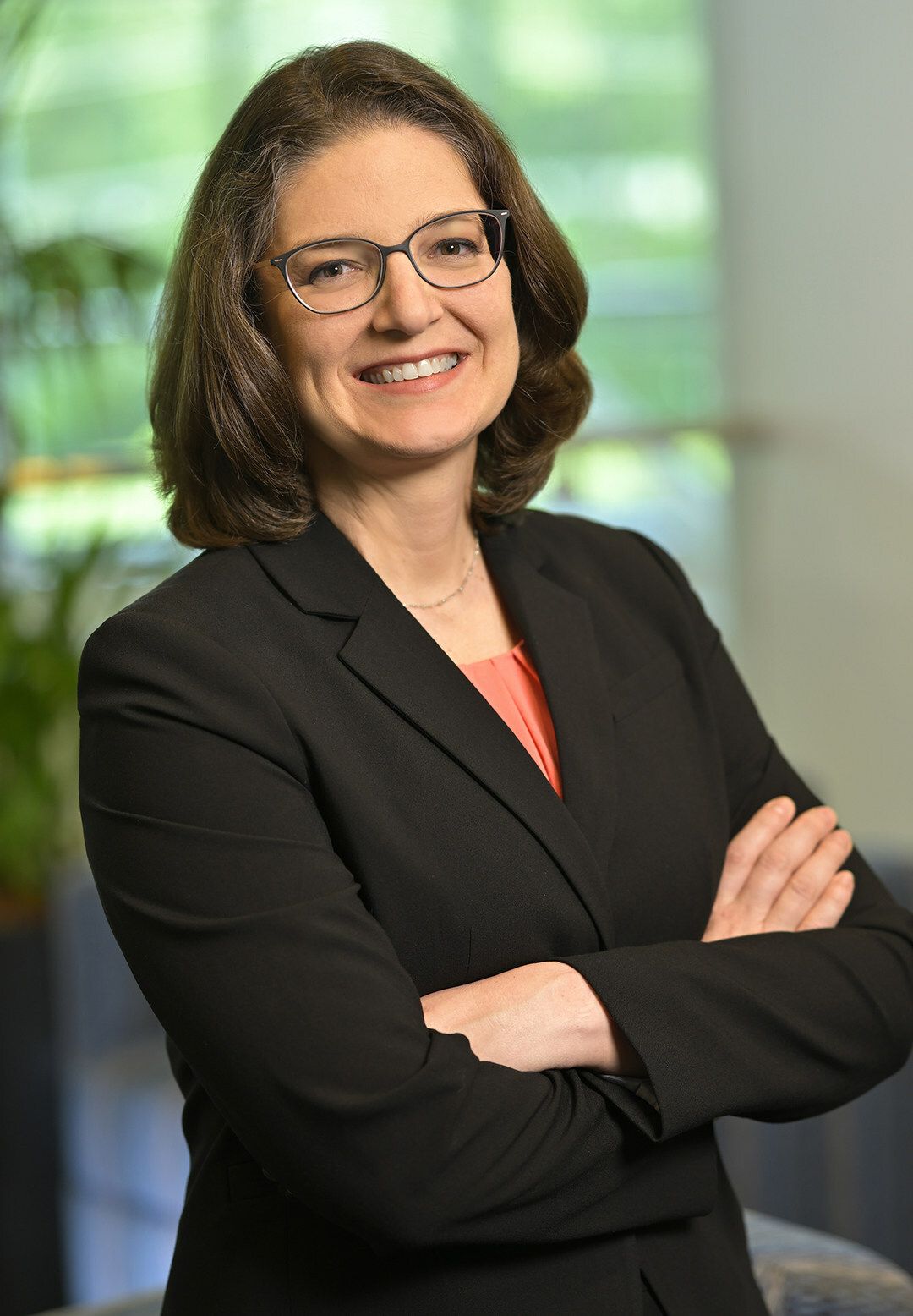News
Article
NCCN Working Group Presents Health-Related Social Needs Recommendations at Policy Summit
Author(s):
During this session at the National Comprehensive Cancer Network (NCCN) Policy Summit, Yelak Biru, MSc, and Crystal S. Denlinger, MD, explained the importance of screening for and addressing health-related social needs.
Despite an increased awareness that health-related social needs, and screening for them, are important, there remains a lot of work to do in the area for health care, said Crystal S. Denlinger, MD, FACP, senior vice president, chief scientific officer for the National Comprehensive Cancer Network (NCCN).
Crystal Denlinger, MD
Image credit: National Comprehensive Cancer Network

Denlinger, the incoming CEO of NCCN, presented on recommendations from a working group that were created for measuring and addressing health-related social needs (HRSNs) within the oncology field at the NCCN Policy Summit in Washington, DC, on September 12.
The working group consisted of 15 leaders and experts from various oncology fields. It was cochaired by Yelak Biru, MSc, president and CEO of the International Myeloma Foundation, and Loretta Erhunmwunsee, MD, vice-chair, NCCN DEI Directors Forum. Convening on April 13, 2023, at NCCN Headquarters in Plymouth Meeting, Pennsylvania, the working group used an evidence-based, consensus-driven process to identify high-impact HRSNs for measurement and intervention for cancer.
The recommendations were presented at the NCCN Policy Summit during the “Health-Related Social Needs in Cancer: High Impact Measures and Recommendations for Policy and Practice” session by Biru and Denlinger.
Yelak Biru, MSc
Image credit: International Myeloma Foundation

On the working group’s behalf, Biru presented the 4 key areas recommended for routine screening: transportation access, housing security, access to food, and financial security. He mentioned 7 additional measures for screening, including utility assistance, digital connectivity, and health insurance needs.
Biru noted that health care professionals should make HRSN screening a routine part of clinical care annually and again at any significant care transitions. He explained that the screening should consist of health care professionals asking patients open-ended questions about HRSNs so that they can be referred to specialized staff to appropriately address their needs.
Denlinger added that routine screenings will support treatment planning and needed adjustments as they may reveal potential challenges associated with different treatment options or surveillance strategies. She also encouraged health care systems to implement infrastructure, including reimbursement and specialized staff like social workers, that can support HRSN screening and follow-up.
“We asked ourselves, ‘What practice, policy, and guideline recommendations will help close the HRSN-based case gap patients face?’” Biru said. “By implementing routine screening for HRSN, intentionally integrating it into practice, and advocating for policies to make that possible, we can personalize treatment plans, extend care beyond clinics, and drive policy reforms for equitable and patient-centered health care.”
doctor's appointment | Image credit: insta_photos - stock.adobe.com

After explaining the importance of HRSNs and how to screen for them, Biru and Denlinger listed practice, policy, and professional society guideline recommendations on how to best implement them.
Denlinger explained that practice recommendations included not only screening for HRSNs but also having a plan to address any unmet needs identified; not having a plan may further harm the patient. Also, she stressed that physicians should not just complete the HRSN screening to “check a box.” Instead, it should be conducted as part of the care conversation and viewed as a “discussion-based screening.”
The policy recommendations included Biru’s suggestion for Congress to allocate funds to support education and training programs for all health professionals, patients, and caregivers on HRSNs and their importance. He also noted that CMS and other payers should reimburse for HRSN screening visits and discussions and incorporate a risk adjustment payment for providers with a high screen-positive rate.
In terms of professional society guidelines, Biru advised clinical practice guidelines and pathway developers to consider incorporating HRSN screening and referral throughout the library of guidelines and pathways. Also, Biru said consideration should be given to the development of a clinical practice guideline or pathway-specific to HRSN screening, discussion, and referral best practices.
Denlinger listed barriers that may prevent these recommendations from being followed, including patients’ lack of trust in physicians and a lack of education on why HRSNs are important. Other barriers include bandwidth issues, administrative burdens, and reimbursement challenges.
To overcome these barriers, Biru proposed a call to action to educate, engage, and advocate. He explained that educating entails teaching providers, patients, and policymakers the importance of screening and addressing HRSNs. Also, as for engagement, Bidu was referring to ensuring HRSNs get appropriate coverage by engaging patients, providers, payers, and policymakers.
He added that health care professionals should advocate for the inclusion of HRSNs in reimbursement coverage, standardized clinical tools, and guidelines. Bidu also suggested advocating for policies that remove barriers preventing HRSNs from being properly addressed.
“At NCCN, we know that caring for people with cancer must go beyond the clinic in order to achieve the best possible outcomes,” Denlinger said. “Our recommendations call for education, advocacy, and engagement so that patients, providers, and policymakers can understand why and how to measure and address health-related social needs.”
2 Commerce Drive
Suite 100
Cranbury, NJ 08512
© 2025 MJH Life Sciences® and AJMC®.
All rights reserved.





